
Monday, 22 April 201308:00 | Registration and Coffee | |
Conference Chairman: Lee Buckler, Managing Director, Cell Therapy Group |
| | |
Session Title: Translational Trends |
| | 09:00 | 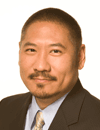 | Keynote Presentation ADSC: Lowest Lying Fruit or Lowest Shelved Pandora’s Box? Negotiating a safe, legal and ethical pathway for ADSC use in the United States
Allan Wu, Chief Scientific Officer, The Morrow Institute, United States of America
Although the regulatory environment for adipose adult mesenchymal stem cells is still in a phase of “ripeness”, some general guidelines for clinicians have finally come into focus. For example, following the recent US District Court ruling of Regenerative Sciences vs. the FDA, it is clear that any cell culture for immediate autologous use is considered beyond the scope of minimal manipulation. Furthermore, formal inquiries to the FDA that have come into the public domain indicate some forms of cell assisted lipotransfer (CAL) may also be deemed beyond minimal manipulation. Still questions remain. What is allowable and what is considered safe and within standard of care and how can a practitioner continue to operate given the recent regulatory climate? A suggested best practice method will be presented during this lecture to help clinicians negotiate a safe, legal and ethical pathway for practice within the United States. A detailed discussion of 21 CFR 1271 and potential scientific remedies to address safety, efficacy and minimal manipulation documentation will also be provided. |
| 10:00 | The State of the Stem Cell Therapy Industry: Clinical Pipeline & Commercial Metrics, Trends, and Analysis
Lee Buckler, Vice President , RepliCel Life Sciences, Canada
An overview of the current state of the industry-sponsored, stem cell therapeutic commercial product and clinical trial pipeline reveals some interesting insights and trends into how the sector has matured over the past decade and where it may be headed. This presentation will provide meaningful data and a detailed discussion related to the commercial penetration and revenue generated by existing products as well as a breakdown of industry-sponsored stem cell therapy clinical trials (excluding basic stem cell transplantation) including stages, product types and indications. Also included will be an analysis of upcoming trends and milestones to watch for in the coming 12 to 36 months. | 10:30 | Coffee Break and Networking | 11:00 | 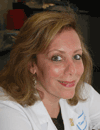 | Keynote Presentation Neural Stem Cell Mediated Cancer Therapy: From Bench to Phase I Brain Tumor Trial
Karen Aboody, Associate Professor, City of Hope, United States of America
Human neural stem cells (NSCs) are inherently tumor--tropic, localizing to tumor foci following intracerebral or intravenous administration in preclinical models of brain tumors, breast carcinoma,
and neuroblastoma. These NSCs can be engineered to express numerous therapeutic agents, making them an attractive drug delivery vehicle. Here, we highlight the pre--clinical characterization, safety and therapeutic efficacy study results that led to permission from the U.S. Food and Drug Administration to initiate a first--in--human phase I study using genetically modified NSCs for tumor selective enzyme/prodrug therapy in recurrent glioma patients (clinicaltrials.gov ID # NCT01172964). |
| 12:15 | Lunch and Poster Viewing | 13:15 | What the Patient Advocate, Competent Authority and SCRO must see in the Submittals from and Operations of the Stem Cell Investigator
Fred Fox, Ethicist, BioMedical Research Institute -- BioMed IRB, United States of America
This presentation is to point out the lessons that should have been learned from examining a series of seemingly unrelated ethical case studies, one on a state and academic coalition to promote core competencies in stem cell research, one on a private sector and academic coalition to oversee the ethics of stem cell research, and one from within an academic medical center sanctioned by the FDA for intentionally evading oversight. The participants in ethical controversies in the field of stem cell research are too often surprised to learn that the defense of claiming to be engaged in the practice of medicine does not work. Stem cell research has always faced funding constraints triggered by moral controversies that led to added layers of regulatory requirements. There is a layer of moral screening that some institutions include in ethical reviews. For example, most academic advocates reject entirely any role for moral screening of stem cell research and do so at peril of facing ultimate research sanctions. Unique in the world of oversight of medical research, there is a formal and quasi regulatory role for the patient advocate when the research includes stem cells. Also, the part of the FDA that regulates stem cell research, the Center for Biological Evaluation and Research, was silent until last year, allowing both intentional and unintentional misconduct to go unpunished from the FDA. Finally, the academic SCRO membership had a conflict of interest against enforcement of properly auditing stem cell research, so a pattern of relying on certifications without training or practices of audit has left the investigators without any solid foundation to address ethical challenges to their work. | 13:45 |  Technology Spotlight: Technology Spotlight:
Optimizing regenerative surgical and laboratory workflow using Nutational Infrasonic Liposuction (NIL)
David Angeloni, President, Millennium Medical Technologies (MMT)
Adipose tissue represents a versatile and abundant source of adult mesenchymal stem cells (MSC). The role of the surgeon in serving as chief procurement practitioner for adipose derived stem cells (ADSC) requires improving efficiencies such as operative times and minimizing muscle and dexterity fatigue of the surgical team. This is critical for any regenerative center as all too often multiple cases in one surgical day are required for long-term viability of a practice. To date there are several power assisted liposuction methods to address this concern, however, nutational infrasonic liposuction (NIL) presents the unique dual opportunity of improving MSC yields intended for therapy. Moreover, clinicians with minimal laboratory infrastructure and training are able to sterilely process cells using the associated intra-operative equipment, thus raising operative workflow and laboratory efficiencies 5-fold. This then affords the clinician the unique ability to safely schedule multiple cases within a reasonable surgery schedule and at a considerably lower overhead cost with respect to reagents and disposables. Attendees are invited to a true ”hands on” demonstration of the device and accoutrements, which will be provided directly by the developers of NIL technology in addition to a live patient demonstration of the device and rapid cell processing.
| |
Session Title: Stem Cell Delivery to Target Sites |
| | 14:00 | Hot Spots in Stem Cell Research
Gary Oosta, Strategic Technology Assessment Analyst, , United States of America
Stem Cell research publications have grown at an astounding pace in recent years. There are now over 200,000 stem cell publications in PubMed. To better understand relationships between specific stem cell classes and selected diseases or medical applications of stem cells, we used technology landscaping methods. A previous analysis showed that the use of stem cells in transplant research was perhaps the largest application at the time, but we found strong connections to cancer, cardiovascular disease and neurological diseases. In this report, we have updated and expanded the initial study to provide insights into current research hotspots in stem cell research. | 14:30 | 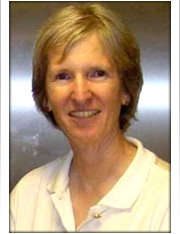 | Keynote Presentation Stem Cell Biology: Where Has It Been- Where Will It take Us?
Prue Talbot, Director, University Of California Riverside, United States of America
The recent developments in stem cell biology, particularly as they relate to pluripotent stem cells, will be presented. The importance of basic research in developing stem cell therapies will be considered. The various areas where stem cells can play important roles in regenerative medicine and preventive medicine, including some of the areas where breakthroughs have occurred or are likely to occur, will be discussed. |
| 15:30 | A Thirty Three Year Experience with Fat Transfer with a Look to the Future
Mel Bircoll, Surgeon, California Academy of Cosmetic Surgery, United States of America
My thirty three year experience with Fat Transfer will offer techniques to insure consistent success and guide today's physicians to the forefront with standardization of this disruptive plastic surgical technique. Rational for caution will be presented to maintain Fat Transfer as a pure fat graft, an operation between the doctor and patient, while still harvesting adipose tissue as a source of stem cells to be used in present and future approved applications. The concept of fat storage for use in serial injections presents the opportunity for ideal size and re-contouring within a comfortable margin of safety. A practical concept for layered Fat Transfer and entrance into the arena of Regenerative Medicine is presented for today's surgeons.
The application of these techniques in breast cancer prevention surgery for the high risk woman will also be discussed. | 16:00 | From Cosmetics to Therapeutics: Establishing a Compliant Regenerative Medical Surgical Organization
Mark Berman, Past President, American Academy of Cosmetic Surgery; Medical Director, California Stem Cell Treatment Center, United States of America
We believe there is immediate benefit to be gained by the use of Adipose Derived Stromal Vascular Fraction (ADSVF or just SVF) that is known to contain Adipose Derived Stem Cells (ADSC) a known form of Mesenchymal Stem Cells (MSC). While major universities and pharmaceutical companies clamor to unlock the magic within stem cells, they contend we remain 5 to 10 years away from clinical applications. In the meantime, enough anecdotal and scientific evidence suggests that stem cells can be utilized now for effective therapy of a multitude of inflammatory and degenerative conditions. Following the initial lead from the Plastic Surgery community, we have developed a multidisciplinary approach to utilizing current technology to produce and deploy SVF for the immediate treatments of a variety of inflammatory and degenerative conditions. While we have also developed a completely closed surgical procedure, we have remained cognizant of the FDA regulations (21 CFR part 1271) for Human Cells, Tissues and Products. The primary objective of initial trials are aimed to determine the relative degree of risk that exists when harvesting fat and deploying autologous SVF derived from it with our particular equipment and protocol. The secondary objective remains to obtain data as to possible efficacy. | 17:00 | Close of Presentations of Day One of the Summit. | |
Clinical Practicum: Delegate Viewing of Reconstructive Surgery Procedures |
| | 17:30 | Clinical Practicum: Delegate Viewing of Reconstructive Surgery Procedures
Allan Wu, Chief Scientific Officer, The Morrow Institute, United States of America
Dr. Allan Wu, CSO of The Morrow Institute will lead a clinical hands-on practicum focused on providing delegates a real-time, hands-on opportunity to understand trends in stem cells-based clinical practice. This Clinical Practicum will be held at The Morrow Institute (Rancho Mirage, CA).
Live patient demonstration of:
- Nutational infrasonic liposuction: harvest and processing of fat graft and SVF (attendees are encourage to bring their own scrubs and experience the device “hands-on” in the operating room, Drs. Morrow, Bircoll, Wu)
- GMP lab and sterile technique: how to work within standard laminar flow hoods and routine cell handling devices (attendees will experience first hand rigid standards necessary to handle specimens in a true GMP sterile fashion)
- Analytical experience: how to use various cell counting equipment for documentation purposes.
|
Tuesday, 23 April 2013 |
Conference Chairman: Dr. Allan Wu, CSO, The Morrow Institute |
| | |
Session Title: Examples of Stem Cells in Translation |
| | 09:00 | 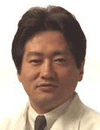 | Keynote Presentation Cell Assisted Lipotransfer: The inventor and clinician scientist Dr. Kotaro Yoshimura shares pragmatic and continuous quality management insights for 2013
Kotaro Yoshimura, MD, Department of Plastic Surgery, University of Tokyo, Japan
Cell assisted lipotransfer (CAL) a method of improving free fat transfer using adipose derived stem cells (ADSC) has been in use and refined for the last 8 years. In this lecture, the inventor of CAL, Dr. Kotaro Yoshimura will share his personal and practical insights on further maximizing reconstructive surgical results using this innovative procedure. Basic science and clinical data will be presented to elucidate the safety and efficacy in breast reconstruction. Furthermore, candid thoughts from the expert himself will be shared during the interactive component of this lecture in addition to personal commentary regarding commercially available cGMP systems for ADSC and autologous fat transfer. |
| 10:00 | Clinical Development of MultiStem® for the Treatment of CNS Injury and Disease
Robert Mays, Senior Director, Athersys Inc, United States of America
Athersys, Inc. is developing MultiStem®, a proprietary adult stem cell product, for the treatment of multiple disease indications. Athersys has undertaken extensive safety profiling of MultiStem in pre-clinical animal studies. Athersys has developed a clinical manufacturing platform for MultiStem and has filed and received authorization of Investigational New Drug (IND) applications for using MultiStem in 4 different indications including: Acute Myocardial Infarction (AMI), prophylaxis against graft vs. host disease (GVHD) and in treatment of ulcerative colitis in an ongoing Phase II study with Pfizer.
Athersys and collaborators have performed focused pre-clinical animal studies to address the mechanisms of action through which MultiStem provides benefit in models of ischemic stroke and other CNS injury and disease. Comparative microarray analysis of RNA isolated from the infarct region of stroke injured rats receiving cells vs. placebo indicates that cell treated animals have a statistically significant decrease in the expression pattern of transcripts associated with infiltrating activated immune cells. From these data, and similar data we have published testing MultiStem in models of traumatic brain injury and spinal cord injury, we hypothesize systemic administration of MultiStem provides protection to "at risk" neuronal tissues by slowing/halting the acute inflammatory response and mobilization of peripheral immune cells to the injury.
More recently, we filed for and received authorization of IND application #13852, a Phase I/II clinical study testing MultiStem in patients suffering an acute ischemic stroke. We have completed Phase I, a dose escalation safety study to determine the highest tolerated dose of MultiStem up to a maximum of 1.2 Billion cells per patient, and will begin enrollment of patients in Phase II of the study in the immediate near future.
| 10:30 | Coffee Break and Networking | 11:00 | Adipose Stem Cell Banking
Akiko Futamura, President and Chief Executive Officer, InfiniteBio, United States of America
| 11:30 | Age-related macular degeneration: Strategies for cellular therapy
Dennis Clegg, Professor, University of California Santa Barbara, United States of America
Eye diseases impact society in devastating fashion, and, although there is a wealth of knowledge about ocular biology, treatment strategies are still lacking. There is great promise in emerging cellular therapies for ocular disease, and efforts are under way to replace retinal pigmented epithelium (RPE) to treat age-related macular degeneration (AMD) and other blinding disorders. The eye has many advantages for the development of cellular therapies, and RPE cells have been derived from both human embryonic stem cells (hESC) and induced pluripotent stem cells (iPSC). Significant advances have been made in methods for differentiation and expansion of stem cell derived RPE, and several strategies are being pursued for transplantation and monitoring of cells. | 12:15 | Lunch and Poster Viewing | 13:15 | Poster Viewing and Networking Session | 13:45 | 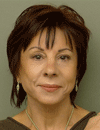 | Keynote Presentation From Ballot Box to Bedside – Advancing Stem Cell Therapies, the California Institute for Regenerative Medicine Experience
Ingrid Caras, Senior Science Officer, California Institute for Regenerative Medicine, United States of America
Advancing science into therapies for patients is a complex and expensive path to travel. The uncertainty of success, particularly for innovative technologies, makes the funding of the translational steps towards and into the clinic, particularly challenging. This keynote will address the role the California Institute for Regenerative Medicine (CIRM) is playing in advancing stem cell science into the clinic and will provide information on the scope of programs, initiatives, and funding opportunities to help investigators from academia and companies make progress in their research.
Created in 2004 through the passage of Proposition 71 by voters in California, CIRM’s funding began in late 2006, focusing on CIRM’s mission to advance stem cell science towards therapies for patients with chronic disease and injuries. CIRM’s first 5 years set priorities based on establishing a strong foundation for leadership in stem cell research, seeding the entire field with discoveries using a variety of stem cell-based platforms, resulting in over $1.5 billion in 560 awards to 60 institutions/companies, publication of more than 1,200 journal articles, construction of 12 dedicated stem cell facilities, recruitment of more than 130 stem cell researchers to the state, and 75 translational projects in more than 30 therapeutic areas.
The focus for the next 5 years is on driving the science to clinical trials to generate evidence of therapeutic benefit for patients and on engaging industry in strategic partnerships to facilitate commercialization of therapies, while maintaining a pipeline of discovery including the basic science, which has the potential to fundamentally transform the field and medicine. |
| 14:30 | Coffee Break and Networking | 15:30 | Modified Mesenchymal Stromal Cells for Cell Therapy
Mo Dao, Senior Scientist, Sanbio, United States of America
SB623 is an adult stem cell product derived from mesenchymal stromal cells (MSCs) by transient transfection with Notch-1. It has proven effective in a variety of models of neurodegenerative diseases. SB623 is not cell replacement therapy. It works by mechanisms including trophic support, production of beneficial extracellular matrix and immuno-modulation. A clinical trial has been initiated in patients with stable stroke deficits. This talk will focus on the immunological mechanism of action and the translation of this product from bench to clinic. | 16:00 | Regenerative Lipo-procurement: Re-engineering liposuction for the regenerative future
David Morrow, Founder, The Morrow Institute, United States of America
Adipose derived stem cells (ADSC) represent the most abundant and easily accessible mesenchymal stem cell in the human body. The process of lipo-procurement with respect to regenerative therapy requires additional case-specific tailoring in terms of: 1. final clinical application, 2. pre-existing habitus and 3. patient medical condition. Our long-term rolling 30 year case series performing regenerative lipo-procurement has culminated in novel but practical methods to assure improved ADSC cell yield and minimal hematopoetic and dermal contamination. This lecture and short practicum will focus on intra-operative methods and modifications to standard tumescent liposuction necessary for truly regeno-centric lipo-procurement. An emphasis on patient safety and prevention of aesthetic and medical complications will be detailed and a final suggested best method of practice will be provided. | 16:30 | Clinical Uses of Biologic Therapies in Orthpaedics: Bone Marrow Concentrate
Wade McKenna, President & Founder, Mckenna Orthopaedics, North Central Texas Orthopeadic Surgery and Sports Medicine, United States of America
Goal of this presentation is to add to the physician treatment arsenal through presentation of clinical uses and results. This talk should also add to the clinical decision making on the use of Bone Marrow Aspirate Concentrate. My interest in the use of stem cells in surgery is driven by the desire to find simple elegant solutions to the difficult, unanswered problems we encounter daily in the care of our patients. | 17:30 | Image Guided Therapeutic Stem Cell Injections
John Feller, Medical Director, Desert Medical Imaging, United States of America
This lecture will review the components of using image guidance as part of a comprehensive stem cell therapy program including:
I. Determine the target.
II. Delivery of the stem cells to the target.
III. Follow up for response to therapy. | 18:00 | Day 2 Clinical Practicum.
Allan Wu, Chief Scientific Officer, The Morrow Institute, United States of America
Live patient demonstration of:
- PRP use in joints. Pain Management and Rehabilitation Medicine Perspective. (attendees will work with live biologic specimens and learn expert injection methods with Dr. Albert Lai)
- Bone Marrow Stem Cell collection and deployment for Orthopedic Applications. (attendees will work with unique collection and harvest sets pioneered by expert regenerative orthopedic surgeon Dr. Wade McKenna and learn expert injection methods first hand)
| |
Day 2 Clinical Practicum. |
| | 18:30 | Live Demonstration of Ultrasound guided needle tenotomy and PRP injection
Albert Lai, Chief Medical Officer, Centers of Rehabilitation and Pain Medicine, United States of America
A resurgence of interest in PRP injections for various forms of tendinopathy has occurred as of late due to more objective data elucidating reduced intratendinous calcifications, improvement in echotexture and overall function. Not all PRP is created equal, nor is there a standardized consensus on the immediate processing. Because of this, clinical success and findings can become highly variable. During this live demonstration we will discuss the variation of PRP processing and what viable options are immediately available to the clinician. Also, we have developed a practical and straight forward method of PRP processing which is affordable, reproducible, sterile and yields consistent clinical results. A live demonstration of the device and PRP injection will be provided. Attendees will be encouraged to directly work with the device to understand theoretical underpinnings of successful PRP processing. | 19:00 | Close of Conference. |
|

 Add to Calendar ▼2013-04-22 00:00:002013-04-23 00:00:00Europe/LondonClinical Translation of Stem Cells SummitClinical Translation of Stem Cells Summit in Palm Springs, CA, USAPalm Springs, CA, USASELECTBIOenquiries@selectbiosciences.com
Add to Calendar ▼2013-04-22 00:00:002013-04-23 00:00:00Europe/LondonClinical Translation of Stem Cells SummitClinical Translation of Stem Cells Summit in Palm Springs, CA, USAPalm Springs, CA, USASELECTBIOenquiries@selectbiosciences.com